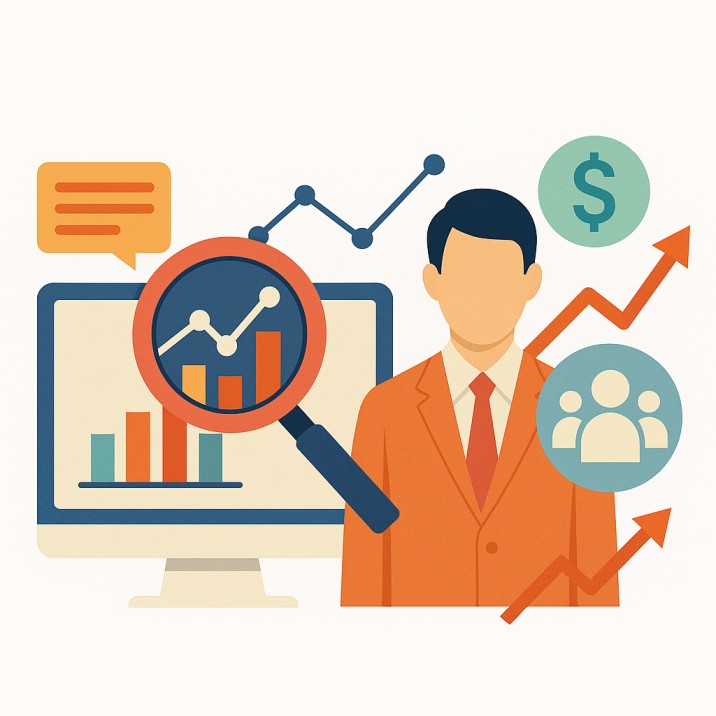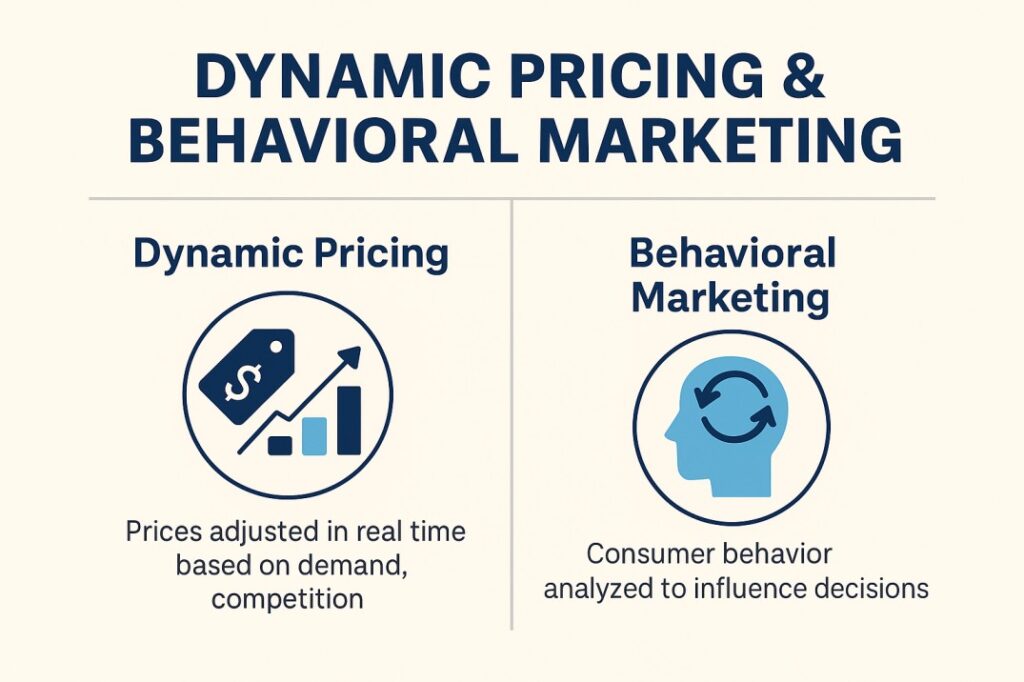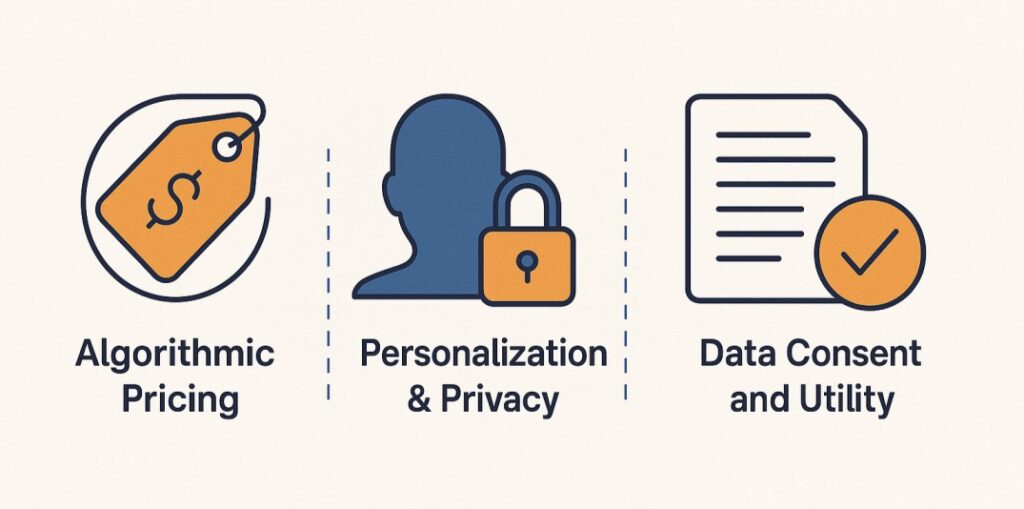
Introduction
In the modern economy where information is exchanged faster than ever, data analytics is revolutionizing marketing as we know it. What was once characterized by intuition, general trends, and broad advertising, is now an accuracy focused, real time, data based experience for marketers. From an economic perspective, however, this is not merely a technical improvement, but rather a transformation in market structure that changes the way markets operate, the way consumer make decisions, and the way firms engage with demand.
Reducing Information Asymmetry and Enabling Efficient Market Outcomes through Data Analytics
One of the biggest economic implications of data analytics is the decrease in information asymmetry. Historically, either one party or the other had more or better information than the other (seller-buyer discrepancy), leading to a suboptimal market outcome.
Data analytics closes the asymmetry in understanding consumer actions and how they shop, and allows for detailed information about consumer actions, preferences, and buying history. This means that consumers can have much greater and relevant information about the product they are buying, which creates a more efficient and transparent exchange. These advantages lead to lower costs of exchange, but most importantly, high levels of consumer satisfaction. As the classical concept of an efficient market assumes that both parties have access to the same/relevant information, we’re getting closer to that with the widespread use of analytics.
Similarly related is the ongoing emergence of targeted marketing that would not be possible without various segmentation tactics. Companies can segment their audiences into incredibly small segments using data points like age, income, geography, online habits. In terms of economics, this allows firms to apply different forms of price discrimination more efficiently.
While first-degree price discrimination is not feasible in most environments, second and third degree price discrimination is entirely made possible, mainly because of data. Companies can now offer different prices, discounts, or product combinations depending on what each consumer is willing to pay, thus maximizing the firm’s revenue stream, and delivering value to the customer. This serves as a practical application of the theory of consumer surplus extraction that economists have studied for many years.
Dynamic Pricing and Behavioural Marketing: Where Economics Meets Data Science

Businesses can now also apply data analytics to determine pricing based on dynamic pricing models. Dynamic pricing allows businesses to adjust their pricing in real time based on demand, inventory, competitor pricing, and macroeconomics. This is operationalizing the concepts price elasticity and marginal revenue optimization for economists, and provides a practical application that is increasingly relied upon in industries such as airlines, hospitality, and e-commerce, which is necessary to remain competitive and responsive to demand. This is indicative of where firms are taking data to establish in real time equilibrium with products, replacing fixed price pricing models.
Another significant area where economics intersects with data science is in behavioural marketing. Behavioural economics has demonstrated that individuals do not always act rationally; their choices are influenced by biases, heuristics, and framing effects. Marketers use data analytics to experiment with and implement behavioural insights in real-time with Data analytics techniques like A/B testing, and personalization algorithms. An example of how behavioural marketing is evidenced would be showing consumers a message like “Only 2 left in stock!” for scarcity bias and nudging consumers to make a quick decision. The examples of behavioural insights and analytics show how we are applying behavioural theories and the influence of data in the marketing sphere to shape consumption choices.
Marginal Analysis, ROMI, and the Rise of Data-Driven Market Power

In addition, covered in economics is the ubiquitous approach of marginal analysis in terms of optimizing marketing budgets. Firms that have access to tools that capture Return on Marketing Investment (ROMI) can determine the exact output of every single unit of marketing spend, whether that be engagement, leads, conversion, or revenue. Firms can thus strategically allocate fewer resources to high output initiatives with greater cost effectiveness, as opposed to pivotal or management decisions worsened by misallocation of resources in uncertain environments. The old age economics advice of investing in initiatives that generate the highest measurable marginal returns has some of its most accurate application in the data driven environment of marketing.
Nonetheless, this transformation in marketing based on data also creates issues. Dominant firms that possess many consumer data sources obtain a powerful position relative to smaller competitors and induce new entrants to face higher entry barriers. Why would a firm want to enter a market in which a dominant firm gathers and possesses vast amounts of data from where it sells its products? If we view a monopoly through the lens of industrial organization, we are forced to think about questions of market power, equity, and whether competition acts need to be updated. Now economists and regulators are faced with the challenges posed by digital monopolies, in which the crucial resource is no longer capital or labour.
At the same time, worries have also increased about ethical issues and privacy issues. Personalisation creates greater opportunity for consumers, but it allows producers to manipulate. With that said, there is a grey area between being useful or being exploitative, especially at a time when consent is buried deeper and deeper into the privacy policies of companies. From a welfare economics perspective, there should be no efficiency gained in favour of consumer choice and privacy.
Conclusion
To conclude, data analytics is not just modifying the methods for marketing, but it is also disturbing the structure and function of modern markets. For economists, this disturbance represents an odd duality: an opportunity to advance, corroborate or disprove economic theories within a digital environment, and a responsibility to develop into a process that is just and inclusive. Organizations are increasingly making decisions based on data, but it is now the responsibility of economists to ensure that the decision making create value not just for the organization, but value for society. The future of marketing, and future of market economies will be discovered where data analytics and data experts conceptualize economies.
Future Scope and Direction of Research— From the Perspective of an Economist and Aspiring Researcher

As an economist with an interest in the changing dynamics of data in a contemporary context, I believe that data analytics and marketing provide interesting opportunities for research. The increasing use of data in real-time, AI-enabled decision-making, and behavioural targeting has the potential not only to change firm strategy but also to create new economic questions that need careful academic study.
One potential area that I would be excited to examine is the long-run effects of algorithmic pricing on market equilibrium and consumer welfare. Dynamic pricing can increase short-run efficiency and profitability, but much of the long-run effects of price stability, fairness, and trust in digital markets are still being studied. Future research could examine how consumers adjust to face continuously changing prices and whether this creates improved efficiencies or generates inequality and instability.
I am particularly interested in exploring the tension between personalization and privacy. Consumers largely commit a vast array of personal data for convenience every day, and my interest includes exploring how to quantify value of data (from the perspective of the consumer and the firm). How much would consumers be willing to trade for personalization with regard to their data? What amount of personalization would consumers start to feel that it is overstepping a line? This provides an opportunity to develop a set of microeconomic models of data consent and utility, which have implications for developers and platforms as well as public policy implications.
Another interesting area is the use of behavioural nudges to change economic behaviour online. Marketers can use numerous subtle related psychological cues driven by analytics to move individuals to a particular action. This presents an opportunity to understand where nudges are in the realm of welfare-promoting actions, to where firms are crossing durable ethical boundaries relative to vulnerable consumer segments. This is part of behavioural economics a space to conduct empirical trials on real-world observable digital environment.
In summary, I view the future of economic research in this space as interdisciplinary connecting economic thought, data science, behavioural evidence, and regulatory assessment. My ambition as an emerging economist is to help bridge this knowledge base by asking critical questions, generating empirical evidence, and ultimately aiding the emergence of a digital marketplace that is not only efficient but also, fair, transparent, and welfare-enhancing.
Frequently Asked Questions
1. In what ways is data analytics able to diminish asymmetries of information in marketing?
Data analytics diminishes asymmetries of information in marketing, offering both buyers and sellers an abundance of detailed and up-to-date information about consumer behaviour, preferences, and purchasing history. This minimizes an imbalance of information that has typified traditional buyer and seller transactions, yielding more effective and transparent market outcomes.
2. What is the role of price discrimination in data-led marketing strategies?
Data allow firms to seek out consumer segments and impose second and third-degree price discrimination. As firms will be able to gauge what consumer segments are prepared to spend, firms can apply optimal pricing, to maximize revenues at each transaction and offer higher value to each customer segment.
3. What is dynamic pricing and how does it relate to data analytics?
Dynamic pricing is when prices are determined in real-time in accordance with consumer demand relative to inventory levels, potential consumer surges, and the pricing of competitive substitutes. Dynamic pricing exemplifies economic factors such as price elasticity and marginal revenue; firms can employ strategies in response to changes in market conditions. Typically firms, such as e-commerce platforms and airlines, can focus their dynamic pricing strategies.
4. How do behavioural economics and marketing connect via data analytics?
Marketers apply behavioural economic theories (e.g., scarcity bias, and framing effects) in conjunction with data analytics, for example, A/B testing, and personalisation algorithms to engage ‘nudge’ consumer decisions. This amalgamation shapes consumers’ purchase behaviour while increasing advertising engagement.
5. What ethical or regulatory challenges arise from the use of data in marketing?
Marketing by dominant companies with large amounts of consumer data may block entry for new firms and raise privacy concerns. In terms of welfare economics, there is a need to balance efficiency with privacy for consumers and ethical use of data.
6. How is data analytics changing the structure of modern markets?
Data analytics is altering market structures by reducing information gaps, shifting competitive advantages, and enabling more dynamic market responses.Data analytics is transforming market structures by reducing information asymmetry, enabling personalized marketing strategies, and giving firms real-time insights into consumer behaviour. It supports behavioral marketing by allowing companies to apply psychological nudges based on data. As firms gain competitive advantages through better targeting and segmentation, markets become more dynamic but also more concentrated raising new questions about fairness, competition, and access in the digital economy.
7. What is the economic value of using data analytics in marketing?
Data analytics increases economic efficiency by improving targeting, lowering transaction costs, and enhancing return on marketing investment (ROMI).Data analytics increases economic efficiency by improving targeting, lowering transaction costs, and enhancing return on marketing investment (ROMI). It also strengthens marketing strategies and supports behavioral marketing by enabling precise, data-driven decision-making.
8. How does data analytics help firms segment their customers?
Using data analytics, firms can segment audiences based on income, preferences, geography, and behaviour, allowing for more effective campaigns.
9. What makes data analytics essential for price optimization?
Data analytics supports dynamic pricing models by providing real-time data on consumer demand, inventory levels, and competitor pricing.Data analytics supports dynamic pricing models by providing real-time data on consumer demand, inventory levels, and competitor pricing. It enhances marketing strategies and strengthens behavioral marketing through predictive and responsive pricing decisions.
10. How do firms use data analytics to extract consumer surplus?
Data analytics allows firms to apply second and third-degree price discrimination by analyzing what different consumer groups are willing to pay.
11. What is the role of behavioural economics in data-driven marketing?
Marketers use data analytics alongside behavioural economics to influence decisions through nudges like scarcity cues and framing techniques.
12. How can data analytics influence ethical concerns in marketing?
While data analytics enhances personalization, it raises concerns about consumer manipulation, data consent, and digital privacy rights.
13. Can data analytics create barriers to market entry?
Yes, large firms with extensive data analytics capabilities can gain disproportionate power, making it difficult for new entrants to compete.
14. Why is data analytics important for measuring marketing success?
Data analytics enables firms to track KPIs like engagement, conversions, and revenue, helping them assess and adjust campaigns effectively.
15. What is the long-term research potential of data analytics in economics?
Data analytics offers opportunities to study algorithmic pricing, personalization vs. privacy, and market fairness through economic modeling.
16. How does data analytics improve marketing budget allocation?
Data analytics enables firms to apply marginal analysis when making marketing decisions. This allows organizations to identify high-performing channels and reallocate budgets to areas that yield the highest Return on Marketing Investment (ROMI). With real-time insights and performance metrics, firms can avoid misallocating resources and invest only in strategies that deliver measurable marginal returns.
17. What is the connection between data analytics and consumer surplus?
Through the use of data analytics, firms can tailor pricing and offers to match individual consumer willingness to pay. This enables second- and third-degree price discrimination, which increases the firm’s revenue while also offering better value to consumers. The result is a more efficient extraction of consumer surplus while preserving satisfaction.
18. How do dominant firms use data analytics to gain market power?
Large firms with access to vast consumer datasets can use data analytics to enhance targeting, personalize offers, and optimize pricing in ways that small competitors cannot. This creates a structural advantage, often raising entry barriers for new firms. In this way, data analytics contributes to the consolidation of market power in the hands of dominant digital platforms.
19. Can data analytics lead to monopolistic market behaviour?
Yes. When only a few firms control large pools of consumer data, they can use data analytics to maintain dominance, engage in exclusionary pricing, and shape consumer behaviour. From the perspective of industrial organization theory, this can resemble digital monopolies that need fresh regulatory frameworks.
20. How does data analytics influence ethical concerns in digital marketing?
While data analytics improves personalization, it also opens the door to manipulation. Marketers may exploit behavioural biases using real-time data, nudging consumers without explicit consent. This creates a grey area where ethical marketing practices intersect with data-driven decision-making, raising concerns about autonomy and transparency.
Penned by Somewrit Sekhar Maiti, Research Analyst
For any feedback mail us at [email protected]
Transform Your Brand's Engagement with India's Youth
Drive massive brand engagement with 10 million+ college students across 3,000+ premier institutions, both online and offline. EvePaper is India’s leading youth marketing consultancy, connecting brands with the next generation of consumers through innovative, engagement-driven campaigns. Know More.
Mail us at [email protected]